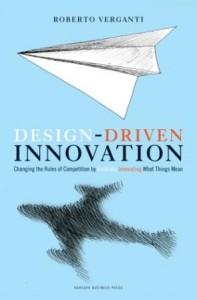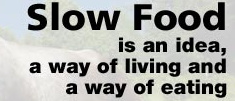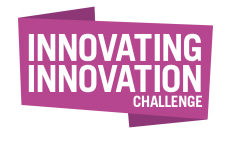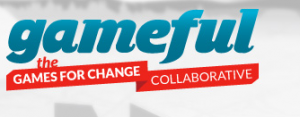November 6th, 2012
 Roberto Verganti has some important insights into how innovation works for cognitive designers. If you don’t know his work check out, Design Driven Innovation. He emphasizes innovations produced by changing the deep psychological and sociological meanings we attach to products and services rather than more traditional technology/capability or market driven innovation methods. Examples include how Artemide reframed the meaning of lamps from something beautify that casts light into something that lifts your mood and makes you feel better. Likewise Sony’s Wii reframed playing video games into a full-body social experience. In both cases these new meanings were proposed to customers rather than crafted in response to perceived needs.
Roberto Verganti has some important insights into how innovation works for cognitive designers. If you don’t know his work check out, Design Driven Innovation. He emphasizes innovations produced by changing the deep psychological and sociological meanings we attach to products and services rather than more traditional technology/capability or market driven innovation methods. Examples include how Artemide reframed the meaning of lamps from something beautify that casts light into something that lifts your mood and makes you feel better. Likewise Sony’s Wii reframed playing video games into a full-body social experience. In both cases these new meanings were proposed to customers rather than crafted in response to perceived needs.
Creating new meaning is one route to psychological impact and is therefore very relevant for cognitive designers. Instead of turning to a scientific understanding of how minds make meaning, Verganti focuses on the designers approach and stresses listening, interpretation and addressing. I especially like his discussion of design circles where a small group of like minded individuals work together and support each other to nurture truly innovative approaches. To quote:
“Within this environment members are more likely to survive skepticism and criticism of the dominate culture. They realize they are not alone and they sustain each other in the early experiments through frustration and failure.”
 An example of an innovation nurtured in a design circle is Slow Foods. Focused on small-scale sustainable food production (good, clean, fair food). the organization:
An example of an innovation nurtured in a design circle is Slow Foods. Focused on small-scale sustainable food production (good, clean, fair food). the organization:
“….was founded in 1989 to counter the rise of fast food and fast life, the disappearance of local food traditions and people’s dwindling interest in the food they eat, where it comes from, how it tastes and how our food choices affect the rest of the world. “
Definitely a meaning-driven innovation.
What new and compelling meaning can you propose?

Posted in Books, Design | No Comments »
October 31st, 2012
 The perception of time plays a critical role in service and experience design. Things can seem to take forever or end way too soon for a variety of psychological reasons. So I am always on the look out for new cognitive science studies on time perception that have implications for designers.
The perception of time plays a critical role in service and experience design. Things can seem to take forever or end way too soon for a variety of psychological reasons. So I am always on the look out for new cognitive science studies on time perception that have implications for designers.
For instance , recent research has uncovered that if we know two events are causally connected we expect them to be close together in time. One implication is that our knowledge of causation can seriously distort our perception of time and therefore the nature of experience we have. An example from the research:
” if people believe that they (or someone or something else) are in charge, the time appears to pass faster.”
Another example is the time experience after pushing an elevator button. If I push it, the elevator seems to take a long time. On the other hand if you push it, the elevator appears to arrive promptly.
From a cognitive design standpoint this puts a premium on understanding the cause-and-effect assumptions we use to access the features in products and services. There is an opportunity to leverage (not change) them to use temporal binding and create a more positive experience.
I am interested to hear from readers that have used design to warp time experience. What causal assumptions did you leverage?

Posted in Cognitive Bias, Psychographics | No Comments »
October 27th, 2012
A lot of my consulting work centers on using cognitive design to encourage health behavior change. Using insights into how our minds actually work, I design messaging, programs, systems, incentives, environments and other artifacts that help people achieve lasting behavior change. So I am always on the look out for new studies that shed practical light on the issue.
 For example, the Customer Experience Matters Blog has an interesting post that looks at who patients take advice from and what it takes to get them to act on it. Some of the survey findings are what you would expect (e.g. we trust doctors more than insurance companies when it comes to taking medical advice) but one surprise is:
For example, the Customer Experience Matters Blog has an interesting post that looks at who patients take advice from and what it takes to get them to act on it. Some of the survey findings are what you would expect (e.g. we trust doctors more than insurance companies when it comes to taking medical advice) but one surprise is:
“As it turns out, about half of consumers that are satisfied with their recent interactions with pharma companies and health plans are likely to follow medical advice from those firms.”
While about half might not seem like much that is up from less than 10% of those that are not satisfied.
The willingness to act on medical advice jumps up significantly when consumers feel satisfied with the interaction.
This holds true with taking medical advice from doctors too. The percentage increases over 50%! An important finding as it means patient satisfaction scores play a key role in achieving health outcomes at least when it comes to conditions requiring continued compliance with a treatment plan.

Posted in Related Fields, Service Innovation | 8 Comments »
October 23rd, 2012
 The management innovation exchange, a open innovation site dedicated to reinventing management, just announced a new innovation contest aimed at improving how organizations innovate. Here is what they want:
The management innovation exchange, a open innovation site dedicated to reinventing management, just announced a new innovation contest aimed at improving how organizations innovate. Here is what they want:
”In the M-Prize we’re launching today, we’re looking for examples and ideas that will help us how build innovation into the woof and warp of our organizations. While there aren’t many businesses that have yet made innovation a true core competence, we can, with your help, build a composite picture of how every element of a company’s management model can be retooled to make it innovation-friendly. “
The hope is that by retooling the management model in this way innovation will become a natural act. Definitely an important cognitive design challenge.
I am interested to hear from readers that want to create a HACK to enter this contest.

Posted in Design, Related Fields | 3 Comments »
October 18th, 2012
 Deloitte’s Center for the Edge has released a new report on how to achieve broad internal change. In a nutshell they argue we need to focus on the edges rather than the core, emphasize passion over skill, run lean on resources, seek funding externally and learn in fast iterative cycles.
Deloitte’s Center for the Edge has released a new report on how to achieve broad internal change. In a nutshell they argue we need to focus on the edges rather than the core, emphasize passion over skill, run lean on resources, seek funding externally and learn in fast iterative cycles.
Edges are not a place but a condition. They include any group/idea that is linked to fundamental shifts that are happening in the marketplace, take little initial investment, can generate new revenue (does not cannibalize) and has the long-run potential for transforming the core. For example, think about cloud computing for an IT services company.
While edges may seem a bit radical to some readers, keep in mind we need some new ways of achieving organizational learning and change. As the report points out:
“Large companies that attempt to enact major change fail more often than not; in fact, only an estimated one-third of major change efforts accomplish the goal they originally set out to achieve.”
One reason edges work is that they have good cognitive design. Focusing on passion, rapid learning and a non-threatening external orientation definitely moves hearts and accelerates minds. In many ways, edges put the psychological needs of innovators first without entering into conflict with established projects, practices and revenue priorities.

Posted in Related Fields, Service Innovation | No Comments »
October 16th, 2012
 I get that question a lot. The expanded version is can we use cognitive design to create an online experience that is as rich and meaningful as face-to-face interaction? While there are a few exceptions, my general answer is yes. And in some ways we can create something much better!
I get that question a lot. The expanded version is can we use cognitive design to create an online experience that is as rich and meaningful as face-to-face interaction? While there are a few exceptions, my general answer is yes. And in some ways we can create something much better!
 To make the case I am always on the look out for scientific studies that explore the issue, especially ones that look at cognitively-deep interactions. For example, a recent article in the Journal of Internet Medical Research examined how well we can create the mental health therapeutic experience online. How well does e-therapy work compared to in person treatment? Here is what the researchers found:
To make the case I am always on the look out for scientific studies that explore the issue, especially ones that look at cognitively-deep interactions. For example, a recent article in the Journal of Internet Medical Research examined how well we can create the mental health therapeutic experience online. How well does e-therapy work compared to in person treatment? Here is what the researchers found:
”Although the results do not allow firm conclusions, they indicate that e-therapy seems to be at least equivalent to face-to-face therapy in terms of therapeutic alliance, and that there is a relationship between the therapeutic alliance and e-therapy outcome.”
This is based on a review of 849 studies of which only 11 dealt with the therapeutic relationship. Not a big sample so the authors are calling for more research. No matter, this finding is surprising given the importance of non-verbal information in conducting mental health therapy.

Posted in Related Fields, Service Innovation | 1 Comment »
October 12th, 2012
 That’s the question that McKinsey Global Research asked nearly 3000 executives across a range of company sizes and industries. They found that most organizations use multiple independent structures and they work best when fully integrated with strategy and are actively supported by the C-suite. The types of innovation structures firms are using include incubators, innovation centers, new business development functions, emerging business opportunities groups, emerging technology business groups and advanced technology institutes.
That’s the question that McKinsey Global Research asked nearly 3000 executives across a range of company sizes and industries. They found that most organizations use multiple independent structures and they work best when fully integrated with strategy and are actively supported by the C-suite. The types of innovation structures firms are using include incubators, innovation centers, new business development functions, emerging business opportunities groups, emerging technology business groups and advanced technology institutes.
While there are no surprises in these findings it summarizes important information for anyone involved in designing innovation capabilities. It also clearly signals that the innovation imperative is alive at well at the executive level.

Posted in Related Fields | No Comments »
October 8th, 2012
 Adding game mechanics and features to products, services and work processes is a hot topic these days. It seems everyone wants to gamify something. For example, I recently completed a project for a client that combined dynamic pricing with a game model. Customers can pay a fixed price or play a game of skill for an opportunity to win a much lower price or a chance to make a donation. The twist is that you actually learn a lot playing the game of skill and that falls within the sponsored mission of the company. The company can’t lose and the consumer gets an exciting learning/gaming experience and the chance to pay less. Matching wits to pay less is one example of the sweet spot for gamification.
Adding game mechanics and features to products, services and work processes is a hot topic these days. It seems everyone wants to gamify something. For example, I recently completed a project for a client that combined dynamic pricing with a game model. Customers can pay a fixed price or play a game of skill for an opportunity to win a much lower price or a chance to make a donation. The twist is that you actually learn a lot playing the game of skill and that falls within the sponsored mission of the company. The company can’t lose and the consumer gets an exciting learning/gaming experience and the chance to pay less. Matching wits to pay less is one example of the sweet spot for gamification.
 Gamification is a major opportunity for cognitive designers so I am always on the lookout for good resources that provide practical insights. For example, if you are just getting started check out and consider joining the Ning network Gameful. There are opportunities to collaborate with the likes of Nike, webinars on practitioner-focused topics such as game design and flow as well as multiple blogs and over 30 distinct groups you can join.
Gamification is a major opportunity for cognitive designers so I am always on the lookout for good resources that provide practical insights. For example, if you are just getting started check out and consider joining the Ning network Gameful. There are opportunities to collaborate with the likes of Nike, webinars on practitioner-focused topics such as game design and flow as well as multiple blogs and over 30 distinct groups you can join.
I am interested to hear from readers that are using games to solve non-entertainment challenges especially ones involving behaviors change or STEM education.

Posted in Service Innovation | 9 Comments »
October 3rd, 2012
 Imagine trying to design a program that convinces homeless youth to decrease binge drinking and marijuana use. How would you go about it? The UCLA School of Nursing in collaboration with the California Institute of Art took that task on with a 154 drug using and homeless youth. One program they designed worked this way:
Imagine trying to design a program that convinces homeless youth to decrease binge drinking and marijuana use. How would you go about it? The UCLA School of Nursing in collaboration with the California Institute of Art took that task on with a 154 drug using and homeless youth. One program they designed worked this way:
“The art messaging program gave participants the opportunity to create messages about health and drug use to influence other drug-using youths. Faculty from the California Institute for the Arts engaged the youths in an exploration of their thoughts and feelings through art, photography and video and encouraged conversations about good health, risky behaviors and ways to stay safe.”
After six months they measured a 25% reduction in alcohol use and a 20% reduction in marijuana use. Exploring thoughts and feelings and using peer-produced multimedia messaging is powerful cognitive design!

Posted in Behavior Change | 1 Comment »
October 1st, 2012
 Yes it is according to new study, “Still too Fat to Fight”. The report claims 25% of young adults are too overweight to get into the military and emphasizes the key role that junk food sold by schools (400 billion calories per year) plays in the problem.
Yes it is according to new study, “Still too Fat to Fight”. The report claims 25% of young adults are too overweight to get into the military and emphasizes the key role that junk food sold by schools (400 billion calories per year) plays in the problem.
There is little doubt that we need change the environment at schools and homes to promote better eating habits. Some interesting work from a cognitive design standpoint is the application of behavioral economics to lunchroom design.
We also need to explicitly teach kids of all ages impulse control and behavior change techniques so they can master the environment. This is very different than teaching them about nutrition and health. It involves techniques that apply to health but all other self control challenges as well. I’m am currently working with a client on Behavior Change 101 for Kids. I’m hopeful they will let me share the results with readers. Drop me an email – mark.k.clare@gmail.com if you or your organization have an interest.

Posted in Behavior Change | No Comments »
 Roberto Verganti has some important insights into how innovation works for cognitive designers. If you don’t know his work check out, Design Driven Innovation. He emphasizes innovations produced by changing the deep psychological and sociological meanings we attach to products and services rather than more traditional technology/capability or market driven innovation methods. Examples include how Artemide reframed the meaning of lamps from something beautify that casts light into something that lifts your mood and makes you feel better. Likewise Sony’s Wii reframed playing video games into a full-body social experience. In both cases these new meanings were proposed to customers rather than crafted in response to perceived needs.
Roberto Verganti has some important insights into how innovation works for cognitive designers. If you don’t know his work check out, Design Driven Innovation. He emphasizes innovations produced by changing the deep psychological and sociological meanings we attach to products and services rather than more traditional technology/capability or market driven innovation methods. Examples include how Artemide reframed the meaning of lamps from something beautify that casts light into something that lifts your mood and makes you feel better. Likewise Sony’s Wii reframed playing video games into a full-body social experience. In both cases these new meanings were proposed to customers rather than crafted in response to perceived needs. An example of an innovation nurtured in a design circle is Slow Foods. Focused on small-scale sustainable food production (good, clean, fair food). the organization:
An example of an innovation nurtured in a design circle is Slow Foods. Focused on small-scale sustainable food production (good, clean, fair food). the organization:








